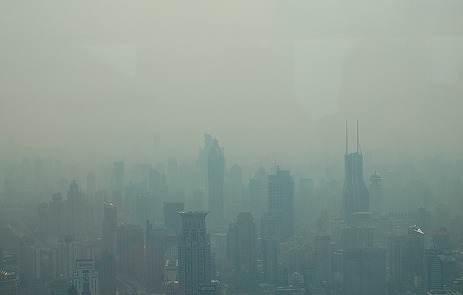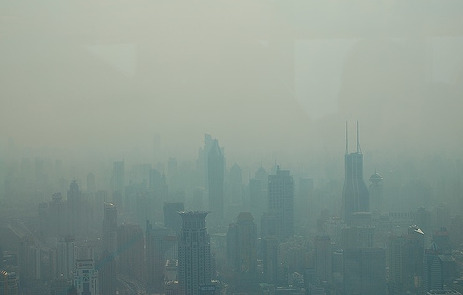 Shanghai, China: Eat your heart out, Los Angeles.Photo courtesy Ethnocentrics via FlickrCrack open the flat seltzer. The U.S. is no longer the world’s top energy hog. That dubious distinction now goes to China, although China insists there’s been a terrible mistake.
Shanghai, China: Eat your heart out, Los Angeles.Photo courtesy Ethnocentrics via FlickrCrack open the flat seltzer. The U.S. is no longer the world’s top energy hog. That dubious distinction now goes to China, although China insists there’s been a terrible mistake.
We actually have a lot in common with China these days. It too is suffering through one of its hottest summers on record, dealing with deadly floods, and trying to get control of what may be its worst oil spill ever.
Plus, like us, China has been plagued by mining disasters. Why? Because, like us, China relies heavily on coal — for about 70 percent of its energy. In fact, scientists from both countries are working together right now to try and figure out how to capture CO2 from burning coal.
In some ways, though, China’s in a class all by itself. Explosive industrial growth followed by awful environmental problems followed by recent, gi-normous investments in renewable energy. Here’s a snapshot of China today — the good, the bad, and the ugly.
The Good
Sharin’of the green: When you boast 20 of the world’s 30 most polluted cities, you have a little motivation to clean up your act. So China has become the world leader in renewable energy investment. Last year, it pumped more than $34 billion into wind turbines, solar panels, and other low-carbon technologies, almost twice as much as the U.S. And in the second quarter of this year, it invested $11.5 billion in renewable energy, more than the U.S. and Europe combined. China now produces more wind turbines and solar panels than any other country and, as Keith Bradsher has written in the New York Times:
These efforts to dominate renewable energy technologies raise the prospect that the West may someday trade its dependence on oil from the Mideast for a reliance on solar panels, wind turbines, and other gear manufactured in China.
Got juice? It just launched the world’s largest stand-alone integrated solar energy project — 20,000 photovoltaic panels atop a Shanghai train station that will provide juice for 12,000 households.
That’s the ticket: By 2030, the population of China is expected to balloon by 350 million people, or roughly the current U.S. population. Now imagine them all in cars. No, don’t, it’s too hideous. To avoid gridlock from hell, China’s answer is building special lanes for high-speed buses.
First, we cancel classes: A new wave of young enviros is spreading on China’s campuses. They’re bent on getting their universities to cut greenhouse gas emissions 20 percent by 2012. They’ve had mixed results so far, but it’s a start.
The Bad
Fill ‘er up: Sure, China’s getting a lot of attention for its commitment to renewable energy, but it also continues to consume huge amounts of fossil fuel. In fact, last November, for the first time, it bought more oil from Saudi Arabia than the U.S. did. Neil King, writing for The Wall Street Journal, reveals what’s been happening out of the spotlight:
Behind the scenes, experts say China is seeking resources — and energy leverage — around the world. Over the past year alone Chinese state-owned companies have signed major deals to extract or export oil, gas, coal, uranium, and other key natural resources from Canada, Venezuela, Iraq, Australia, Turkmenistan, and South Africa.
What could go wrong? It’s that ambitious pursuit of minerals around the world that’s prompted China to file the first application for deep-sea mining in international waters. It wants to start digging into the ocean floor around hydrothermal vents almost a mile under the Indian Ocean. The goal is to recover copper, nickel, and cobalt-metals used in mobile phones, laptops, and batteries. The project’s setting off all kinds of alarms among enviros.
The Ugly
Pick your poison: The manufacturing boom in China has brought with it familiar consequences: soaring cancer rates tied to carcinogens from manufacturing and chemical plants. A lot of the more toxic industries have moved to rural areas where regulation is more lax. The result is a tragic little trend known as “cancer villages.” Jonathan Watts, writing for The Guardian, has the disturbing details:
Chinese farmers are almost four times more likely to die of liver cancer and twice as likely to die of stomach cancer than the global average, according to study commissioned by the World Bank. The domestic media is increasingly filled with reports of “cancer villages” — clusters of the disease near dirty factories.
Now that’s ugly.



